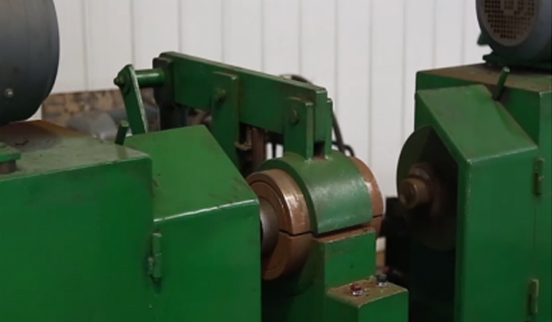 Afrikaans
Afrikaans  Albanian
Albanian  Amharic
Amharic  Arabic
Arabic  Armenian
Armenian  Azerbaijani
Azerbaijani  Basque
Basque  Belarusian
Belarusian  Bengali
Bengali  Bosnian
Bosnian  Bulgarian
Bulgarian  Catalan
Catalan  Cebuano
Cebuano  Corsican
Corsican  Croatian
Croatian  Czech
Czech  Danish
Danish  Dutch
Dutch  English
English  Esperanto
Esperanto  Estonian
Estonian  Finnish
Finnish  French
French  Frisian
Frisian  Galician
Galician  Georgian
Georgian  German
German  Greek
Greek  Gujarati
Gujarati  Haitian Creole
Haitian Creole  hausa
hausa  hawaiian
hawaiian  Hebrew
Hebrew  Hindi
Hindi  Miao
Miao  Hungarian
Hungarian  Icelandic
Icelandic  igbo
igbo  Indonesian
Indonesian  irish
irish  Italian
Italian  Japanese
Japanese  Javanese
Javanese  Kannada
Kannada  kazakh
kazakh  Khmer
Khmer  Rwandese
Rwandese  Korean
Korean  Kurdish
Kurdish  Kyrgyz
Kyrgyz  Lao
Lao  Latin
Latin  Latvian
Latvian  Lithuanian
Lithuanian  Luxembourgish
Luxembourgish  Macedonian
Macedonian  Malgashi
Malgashi  Malay
Malay  Malayalam
Malayalam  Maltese
Maltese  Maori
Maori  Marathi
Marathi  Mongolian
Mongolian  Myanmar
Myanmar  Nepali
Nepali  Norwegian
Norwegian  Norwegian
Norwegian  Occitan
Occitan  Pashto
Pashto  Persian
Persian  Polish
Polish  Portuguese
Portuguese  Punjabi
Punjabi  Romanian
Romanian  Russian
Russian  Samoan
Samoan  Scottish Gaelic
Scottish Gaelic  Serbian
Serbian  Sesotho
Sesotho  Shona
Shona  Sindhi
Sindhi  Sinhala
Sinhala  Slovak
Slovak  Slovenian
Slovenian  Somali
Somali  Spanish
Spanish  Sundanese
Sundanese  Swahili
Swahili  Swedish
Swedish  Tagalog
Tagalog  Tajik
Tajik  Tamil
Tamil  Tatar
Tatar  Telugu
Telugu  Thai
Thai  Turkish
Turkish  Turkmen
Turkmen  Ukrainian
Ukrainian  Urdu
Urdu  Uighur
Uighur  Uzbek
Uzbek  Vietnamese
Vietnamese  Welsh
Welsh  Bantu
Bantu  Yiddish
Yiddish  Yoruba
Yoruba  Zulu
Zulu Comprehensive Guide to Conveyor System Components and Their Essential Roles in Efficient Operations
Understanding Conveyor Components and Parts
Conveyor systems are an essential part of modern industrial operations, playing a crucial role in the movement of goods within factories, warehouses, and distribution centers. As these systems vary widely in complexity and design, it's important to understand the various components and parts that make up a conveyor system. This understanding not only helps in the selection of the right conveyor for specific applications but also in ensuring proper maintenance and operational efficiency.
1. Conveyor Belts
At the heart of any conveyor system lies the conveyor belt. These belts, which can be made from various materials like rubber, PVC, or metal, are designed to transport goods from one point to another. The choice of belt material depends on the type of materials being transported, environmental conditions, and the required durability. For instance, rubber belts are often used for their flexibility and durability, while metal belts may be utilized in high-temperature applications.
2. Rollers
Conveyor rollers are another critical component. They support the weight of the conveyor belt and its load, allowing for smooth movement and reducing friction. Rollers can be powered or unpowered, depending on the design of the conveyor system. Powered rollers are usually driven by motors and are commonly found in systems where the conveyor needs to move more substantial loads or operate at higher speeds.
3. Drive Motors
The drive motor is the engine that powers the conveyor system. It provides the energy needed to move the belt and ensure a consistent and controlled flow of materials. When selecting a drive motor, factors such as load capacity, speed requirements, and energy consumption need to be considered. Proper selection ensures not only efficient operation but also maximizes the lifespan of the conveyor system.
conveyor components & parts

4. Idlers and Frames
Idlers are the rollers that support the returning side of the belt and help maintain its tension. They play a vital role in preventing sagging and ensuring the belt remains aligned. Conveyor frames provide the structural support for the entire system. Made from materials like steel or aluminum, the frame must be strong enough to withstand the loads and environmental conditions in which the conveyor operates.
5. Conveyors Types
Conveyor systems come in various types to suit different applications. For instance, belt conveyors are widely used for transporting bulk materials, while roller conveyors are often utilized for heavy items in distribution centers. Similarly, modular conveyors offer flexibility in design and configuration, making them ideal for facilities with constantly changing layout needs.
6. Maintenance and Upkeep
Understanding conveyor components is also crucial for maintenance. Regular inspection and maintenance of these parts can significantly reduce downtime and extend the life of the conveyor system. Key maintenance practices include checking belt alignment, monitoring roller wear, and lubricating moving parts to prevent friction and overheating.
7. Conclusion
In conclusion, conveyor systems are vital to the efficient operation of today's industrial and logistical processes. By understanding the various components and parts of conveyor systems – from belts and rollers to drive motors and frames – operators can make informed decisions about selection, maintenance, and troubleshooting. This knowledge ultimately contributes to enhancing productivity, reducing operational costs, and improving overall system reliability. Properly maintained conveyor systems ensure that businesses can keep pace with the ever-increasing demands of efficiency in today's fast-paced market.
-
Wing Pulley Conveyor for Conveyor Belt MaintenanceNewsJun.16,2025
-
Self Cleaning Spiral Idler for Conveyor DesignNewsJun.16,2025
-
Pulley Lagging for Conveyor Belt AlignmentNewsJun.16,2025
-
Impact Idlers Used in Belt Conveyor for PerformanceNewsJun.16,2025
-
Ceramic Lagging Conveyor Pulley for Conveyor Belt SystemsNewsJun.16,2025
-
Belt Conveyor Idler for Heavy-Duty ApplicationsNewsJun.16,2025





























